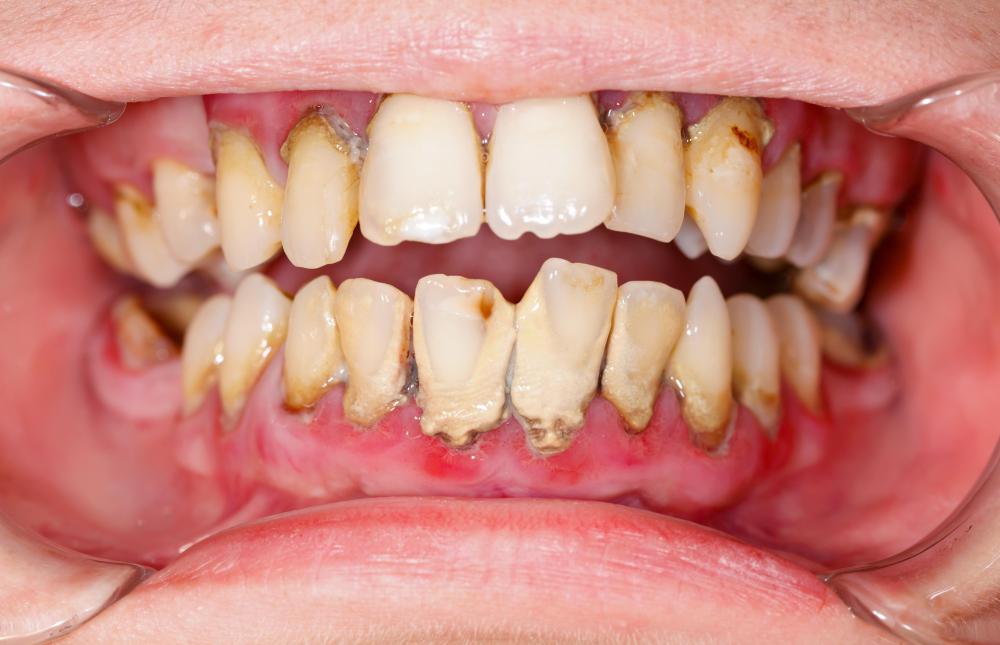At TheHealthBoard, we're committed to delivering accurate, trustworthy information. Our expert-authored content is rigorously fact-checked and sourced from credible authorities. Discover how we uphold the highest standards in providing you with reliable knowledge.
What Is an Odontogenic Cyst?
An odontogenic cyst is a membrane-bound sac that can be empty or filled with a viscous substance or fluid. The membrane of this type of cyst comes from the epithelial cells that produce the teeth. There are approximately six different types of these cysts. Nomenclature and descriptions of the different types of odontogenic cysts can be highly variable. Most of these cysts are treated by surgical removal.
The most common type of odontogenic cyst is the periapical or radicular cyst. This type of cyst forms when the contents of a dead and decaying tooth leaks into the tissue at the base of the tooth. The inflamed tissue stimulates the growth of residual embryonic epithelia cells and eventually leads to the formation of a cyst. Removing the dead tooth usually brings about the re-absorption of the periapical cysts, but when this does not occur the cyst needs to be surgically removed and pathologically reviewed.

Dentigerous cysts are the second most common type of odontogenic cysts. These cysts develop inside the cavity of a tooth that has failed to erupt from the gum. A very similar type of cyst is the keratocyst odontogenic tumor, also known as a primordial cyst, which forms when the tissue inside a tooth follicle fails to develop into a tooth and instead produces a cyst.

When a cyst forms near the base of a molar that has only partially erupted from the gum, it is called a paradental cyst. Gorlin cysts, also called calcifying odontogenic cysts, typically form in the front part of the jaw and are often associated with an impacted tooth. A glandular odontogenic cyst is an extremely isolated cyst found in the lower jaw.

All of these types of cysts are usually discovered during the routine yearly radiological review of the teeth at the dentist’s office. They may also be discovered when the reason for an unerupted tooth is explored by the dentist. Occasionally, an odontogenic cyst produces some mild pain or discomfort that will lead a patient to see his dentist.
The typical treatment for these types of cysts is to watch the growth of the cyst to be certain it does not displace the surrounding teeth. If the size of the cyst threatens the health of the mouth, the cyst should be surgically removed and a pathology should be run on the tissue just to be certain the diagnosis is correct. When excising the cyst, it is important that all the cystic tissue is removed so that the cyst does not re-grow. Careful notes of the exact location of the cyst should be kept on the patient’s record so that the area can be reviewed periodically for any signs of cyst growth.
AS FEATURED ON:
AS FEATURED ON:















Discuss this Article
Post your comments